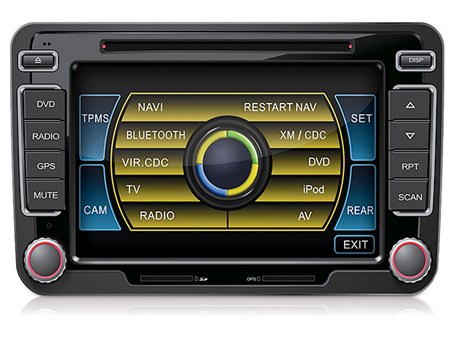Automakers are sinking billions of dollars into in-vehicle technology that many owners are simply not using, according to a new report from JD Power and Associates.
In its inaugural Driver Interactive Vehicle Experience (DrIVE) study in the United States, JD Power also identifies dealers as playing a central role in whether or not consumers use the technology – but puts ultimate responsibility back on the auto-makers.
Analyzing driver experiences with in-vehicle technology features during the first 90 days of ownership, the 2015 DrIVE report found that at least 20 percent of new-vehicle owners had never used 16 of the 33 features measured in the study.
 Read that at 100 km/h.
Read that at 100 km/h.
What has to be remembered here, is that most of these electronic “features” were bundled up in a package, and the owner has paid for all of them.
The five features owners most commonly reported that they “never use” were: in-vehicle concierge (43 percent), mobile routers (38 percent), automatic parking systems (35 percent), head-up display (33 percent) and built-in apps (32 percent).
The study found 14 technology features that 20 percent or more of owners do not want in their next vehicle, with the top six being: rear-seat entertainment (58 percent), massaging seats (47 percent), in-vehicle concierge (44 percent), automatic parking (39 percent) and Android Auto and Apple CarPlay (38 and 37 percent respectively).
What was very interesting to me, was that the Gen Y respondents – those born between 1977 and 1994 – the number of features unwanted by at least 20 percent of owners went from 16 to 23, particularly technologies related to entertainment and connectivity systems.
“In many cases, owners simply prefer to use their smartphone or tablet because it meets their needs; they’re familiar with the device and it’s accurate,” said JD Power executive director of driver interaction and HMI research Kristin Kolodge.
“In-vehicle connectivity technology that’s not used results in millions of dollars of lost value for both consumers and the manufacturers.”
Among all owners, the most frequently cited reasons for not wanting a specific tech feature in their next vehicle were that they “did not find it useful” in their current vehicle and that the technology “came as part of a package on my current vehicle and I did not want it”.
Significantly, owners who said their dealer did not explain the feature had a higher likelihood of never using the technology.
Furthermore, features that were not activated when the vehicle was delivered often resulted in the owner not even knowing they had the technology onboard.
“The first 30 days are critical,” Ms Kolodge said. “That first-time experience with the technology is the make-it-or-break-it stage.”
“Auto-makers need to get it right the first time, or owners will simply use their own mobile device instead of the in-vehicle technology.”
Ms Kolodge said dealerships played the most important role in helping buyers get off to a good start with the technology in their vehicle, given the first few weeks of ownership were critical.
“While dealers are expected to play a key role in explaining the technology to consumers, the onus should be on auto-makers to design the technology to be intuitive for consumers,” she said. (Somebody should impress that on BMW and the cumbersome iDrive controllers.)
“Auto-makers also need to explain the technology to dealership staff and train them on how to demonstrate it to owners.”
The study, which is based on responses from more than 4200 vehicle owners and lessees (interviewed between April and June this year), found that the technologies that owners most often want are those that enhance the driving experience and safety, which are only available as a built-in feature rather than via an external device.
The features most owners did want included were: blind-spot warning and detection (87 percent), fuel economy indicator (87 percent), seat lumbar adjustment (86 percent), phone pairing system (84 percent) and park assist (82 percent). Vehicle health diagnostics and adaptive cruise control were also highly rated features.




